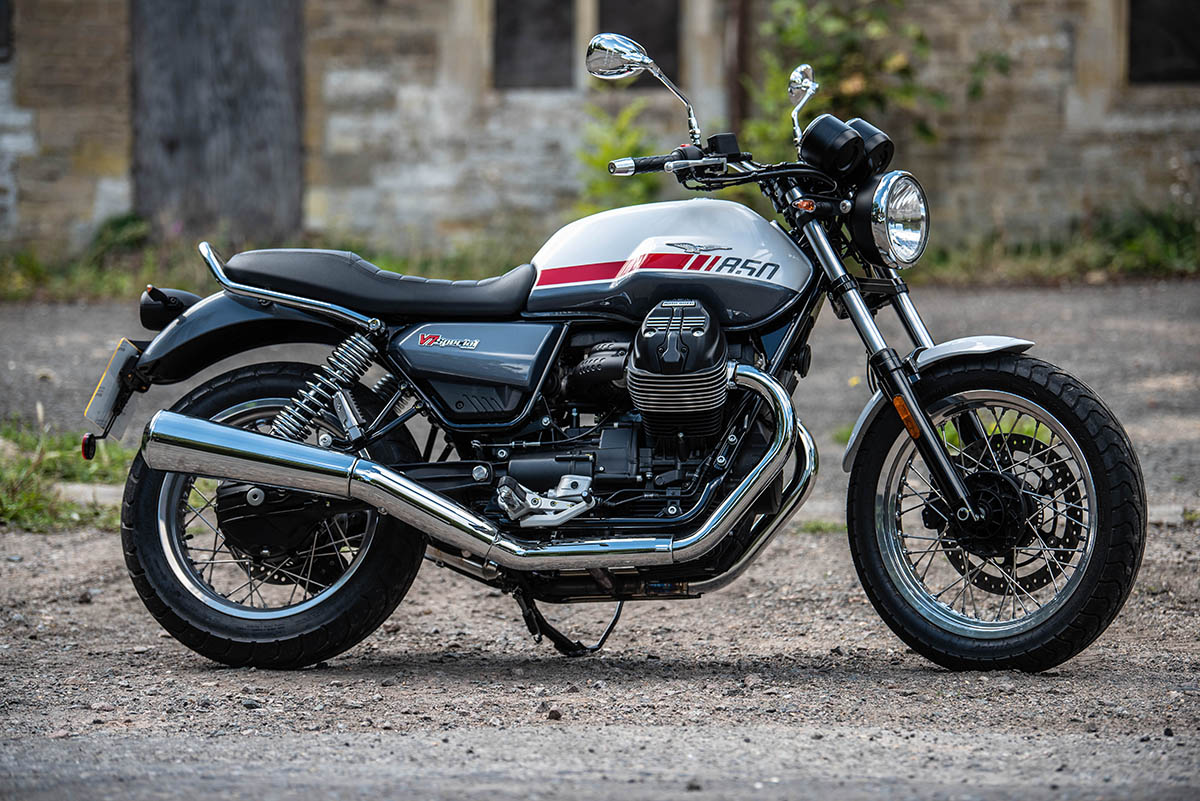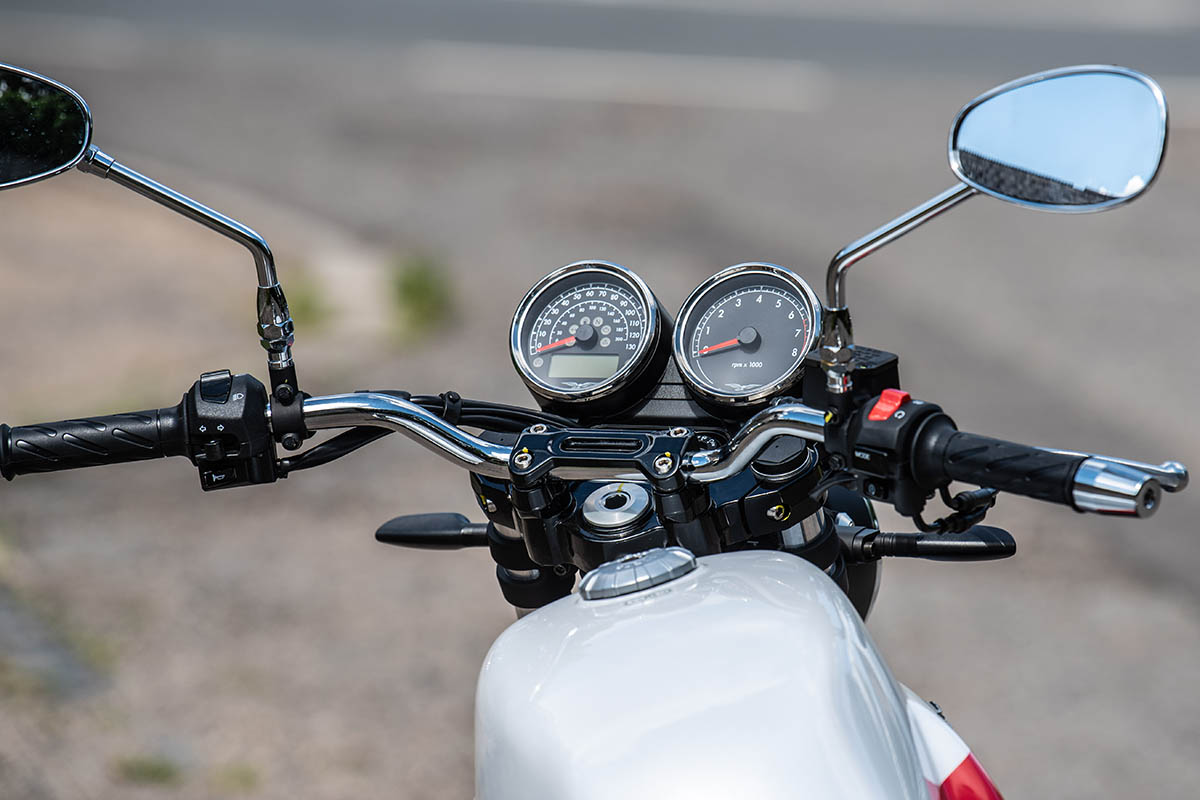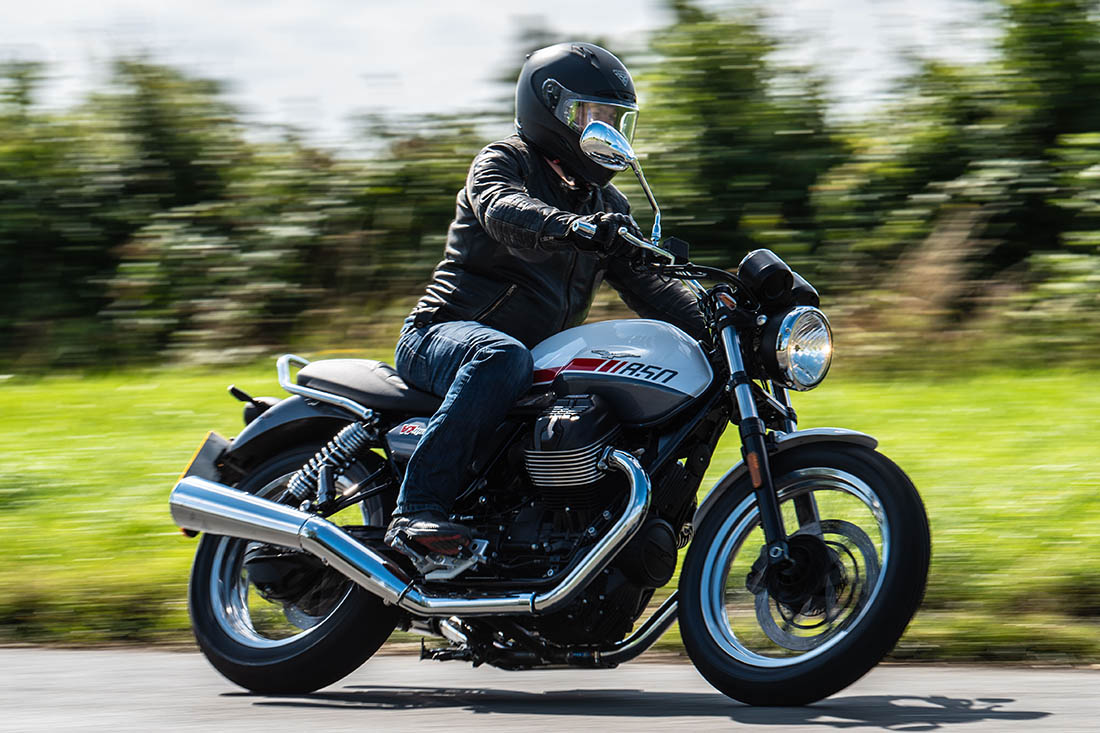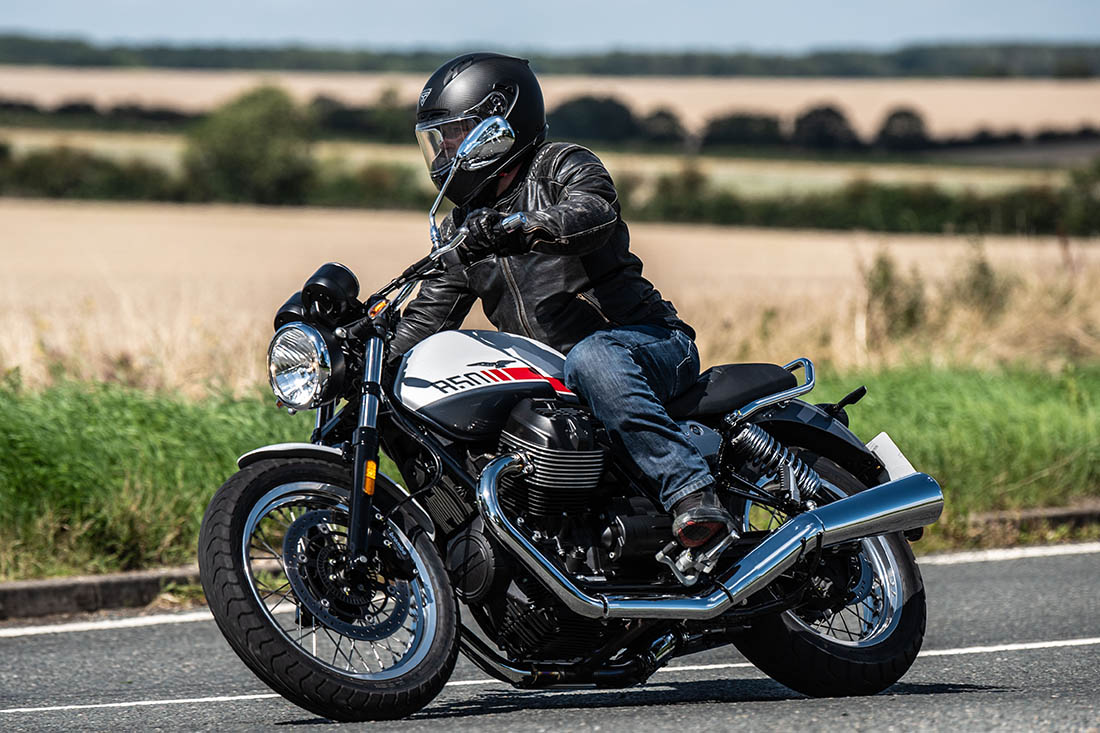Retro roadsters are all about authenticity. Whether it’s the name on the tank, the sound emanating from the exhaust or the shape of the fuel tank, motorcycle marketeers are keen to make sure we’re buying into their traditions and heritage. It’s a proven formula, one which has worked especially well for brands like Harley-Davidson, Royal Enfield and Triumph, but when it comes to real authenticity, few manufacturers are better placed than Moto Guzzi, the brand which has stuck stubbornly to its transversely mounted, V-twin, engines for well over half-a-century now.
The V7 is an important model for Moto Guzzi, arguably as important as Bonneville for Triumph or Commando for Norton, as it’s the nameplate carried by the model which marked a significant change in the company’s fortunes and design philosophy. The 1967 V7, named as such because it was powered by a 700cc 90° V-twin engine, was the first Moto Guzzi to use the transversely mounted, air-cooled, pushrod driven valves (with shaft drive) engine design. It’s an architecture which has been ever present in the Italian company’s range ever since, and which has been the sole engine configuration for Moto Guzzis for decades now.
And let me just put my cards on the table right now. I am a big of Moto Guzzi and enjoyed many a memorable mile on the previous generation of V7s, which was introduced some 15 years ago. My fondness probably comes from my earliest motorcycling memories, riding pillion as a small child on a 1978 Le Mans Mark I, and I’ve always loved the modern day V7 because it has an authenticity I don’t think other retros can match.
Where machines like the Triumph Bonnevilles and Kawasaki Z900s are modern motorcycles wearing a vintage frock, the V7 always felt, to me at least, like a proper evolution of an early ‘80s Guzzi. The air-cooled engine was less refined than the competition, the gearbox a bit heavier and the shaft drive induced a kind of torque reaction under acceleration that I’ve never experienced on any other modern machine. Sure the 744cc V-twin was underpowered when compared to the competition, but it made up for it in spades with its old school charm. I always felt it was a somewhat underrated motorcycle which deserved to sell better than it did. This, however, was to be my first experience of the latest generation V7, which was introduced a few years back, and I definitely one I was looking forward to.

First impressions
The latest Moto Guzzi V7 Special looks gorgeous, in my opinion. The design of the rebooted V7 has barely changed since being introduced in 2007. The styling draws heavily on the early Seventies V7 Sport for its inspiration, a design considered by many to be the pinnacle of the original model’s variants.
Sat astride, the modern day bike is surprisingly compact and easy to manage for smaller riders, yet somehow it manages to look big and bulky – probably down to the 18” front wheel, large fuel tank and, of course, the transversely mounted motor with its sticky out cylinder heads.
It’s an authentic design, which doesn’t feel a million miles away from a 1972 V7 Sport. Our test bike was the £8,600 Special, which has the gorgeous grey, white and red paint, spoked wheels and lashings of chrome, although there is also a base model, called the Stone, which has matt paint, blacked out components and cast wheels. I think it looks smart too, but still can’t hold a candle to the more classically designed Special.
Thumb the starter and the V-twin thuds into life as the bike rocks from side to side with a blip of the throttle. For me, at least, there’s something hugely satisfying about knowing there’s a characterful engine between your legs. The modern day Triumph Bonneville is a nice bike and all but, compared to this, it’s boring and lacks the drama only Italian manufacturers can engineer into their bikes.

The latest V7 now shares the 853cc motor shared with its V9 Bobber and V85 TT stablemates. At 64bhp, it’s the best part of 20bhp up on the 744cc versions it replaces – although surprisingly less than the outputs claimed back in the 1970s. It’s more refined than the previous model too. It’s still an air-cooled engine, with the two valves per cylinder actuated by pushrods, but internal reworkings needed to meet the latest emissions regulations have changed the character slightly. By modern standards it’s still a positively prehistoric design, yet it’s actually surprisingly refined. To be honest, I don’t really know if that’s a good thing or not as the rawness of the previous versions was one of the things I liked most about them.
Still, it continues to have an undoubtedly Guzzi sense to it, albeit with a more polished feel. Sure, the clutch is light, the six-speed gearbox (mostly) positive and the engine a little more muted than before (thanks Euro5!) but the minute you pull away you know you’re riding something quirky and it makes you feel that little bit special.
Still, it’s not all perfect. The throttle feels a bit snatchy at low rpm (thanks again Euro5) and the shift light starts flashing like a Las Vegas slot machine the minute you hit 4,500rpm. It feels too early, really, as the motor felt really comfortable between 5-6k, with peak power coming at 6,800rpm. One improvement on this latest iteration is the shaft drive, which feels much less obtrusive than the one on the last V7 I rode. While I liked its quirkiness, rising slightly as you got on the gas out of corners, this was virtually unnoticeable while riding the latest version.
Competitors like the aforementioned Bonneville, as well as Japanese retros like the Kawasaki Z650RS and Yamaha’s XSR700 all feel livelier, but perhaps the closest bike to the V7 on sale today is the Royal Enfield Interceptor. The Guzzi is higher-spec and now makes more power, thanks to the latest capacity hike, but spiritually they feel like they’re playing the same game. Of course, the Guzzi is the best part of two grand more expensive (at least on the list price) but we’re seeing some cracking deals in the dealerships just now – making the gap a lot closer than it appears. It’s also a bit cheaper than Triumph’s base model Speed Twin 900. I still can’t believe we don’t see more of these on the road…
Ok, so dynamically it’s best enjoyed at calmer speeds. The chassis is nice and stable, if a little slow to turn in, but the basic suspension tied itself in knots when pushing on through some of the bumpier roads on our test route. Ground clearance isn’t the best either, and while the single disc Brembo brake up front has plenty of feel it is a little lacking in ultimate bite. It doesn’t really matter to me though, as rolling off and riding at a more relaxed pace is where this bike is best enjoyed. At 223kg fuelled up, it’s not exactly a lightweight – yet the low centre of gravity means it’s very easy to manoeuvre at slow speeds.

It's also one of those bikes which is great to look at and own. From the slabby tank (a real throwback to traditional Moto Guzzi designs and generously holding 21 litres) to the lush two/three-tone paint, which takes its inspiration from the 1975 V7 S3 (although I’m really not keen on the gaudy ‘850’ tank graphics), it all feels like a cohesive package. The twin dial instruments are very traditional analogue units, although the digital inset gives gear indication, clock and a ‘shift up’ warning to go with the annoying light. The saddle is heavily sculpted and while I appreciated the low seat height of 780mm, the lack of padding, combined with choppy suspension, did leave me quite sore and fatigued after a full day out on the road.
To conclude, the Moto Guzzi V7 remains one of my favourite motorcycles. The extra performance and refinement make it a better all-round machine when compared to previous V7s, although one could argue that it’s not quite as quirky and raw as the old 750s. Whether that’s a plus or minus is up to you to decide, but if I was in the market for a middleweight retro roadster, I’d definitely be heading out to get a test ride on a Moto Guzzi V7. It won’t be to everyone’s taste but if (like me) you love it, you are really going to love it!
Moto Guzzi V7 Special specification
Price: £8,600
Engine: 853cc, air-cooled, transversely mounted 90°V-twin, two-valves per cylinder
Power: 47.8kW (65bhp) @ 6,800rpm
Torque: 73Nm @ 5,000rpm
Suspension: 40mm telescopic front fork with twin rear shock absorbers with preload adjustment
Wheels: Spoked, 18” front and 17” rear
Tyres: Tubeless, front 100/90-18, rear 150/70-17
Weight: 223kg wet
Seat height: 780mm
Fuel tank: 21 litres
Contact: www.motoguzzi.com



